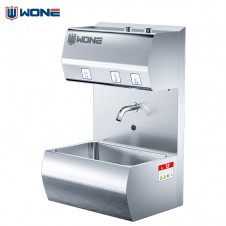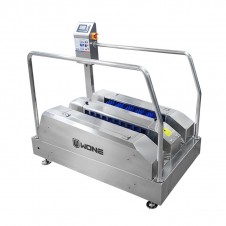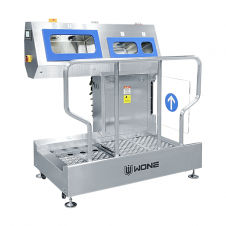Clothes Rack made of 304 SS PCR-04B
●Durability and Longevity
●Hygiene and Cleanliness
●Regulatory Compliance
●Aesthetics and Professionalism
●Cost Considerations
●The top of rack has numbers,100mm distance of each hanger
- Product Details
- Technical Parameters
- Order Guides
Features
Clothes racks in food factory changing rooms are important for employees to hang their work attire, such as uniforms, lab coats, or
protective clothing. Here are some features to consider when selecting clothes racks for a food factory changing room:
1. Durability and Longevity: 304 stainless steel is known for its excellent corrosion resistance, making it highly durable and
long-lasting. It can withstand the harsh conditions of a food factory environment, including exposure to moisture, chemicals, and fre-
quent cleaning. Investing in 304SS clothes racks can potentially save costs in the long run by reducing the need for frequent replac-
ements.
2. Hygiene and Cleanliness: Stainless steel is inherently hygienic due to its non-porous surface, which makes it resistant to
bacterial growth and easy to clean. This is particularly important in the food industry, where maintaining strict cleanliness and hygie-
ne standards is crucial. 304SS clothes racks can be easily wiped down, disinfected, and maintained in a sanitary condition, minimiz-
ing the risk of cross-contamination.
3. Regulatory Compliance: Depending on the local regulations and industry standards, using materials like 304 stainless ste-
el may be required to ensure compliance. Certain food safety regulations or certifications may specify the use of corrosion-resistant
materials in specific areas or equipment, including clothes racks. Using 304SS clothes racks can help meet these requirements.
4. Aesthetics and Professionalism: Stainless steel has a sleek and modern appearance that can contribute to an overall
professional and clean look in the changing room. This can enhance the image of the food factory and create a positive impression
for both employees and visitors.
5. Cost Considerations: It is true that 304 stainless steel is generally more expensive compared to other materials such as
plastic or coated metal. However, it's important to assess the long-term benefits and cost savings associated with its durability and
low maintenance requirements. Consider the potential costs of frequent replacements, repairs, or the need to meet regulatory
compliance if alternative materials do not meet the necessary standards.











